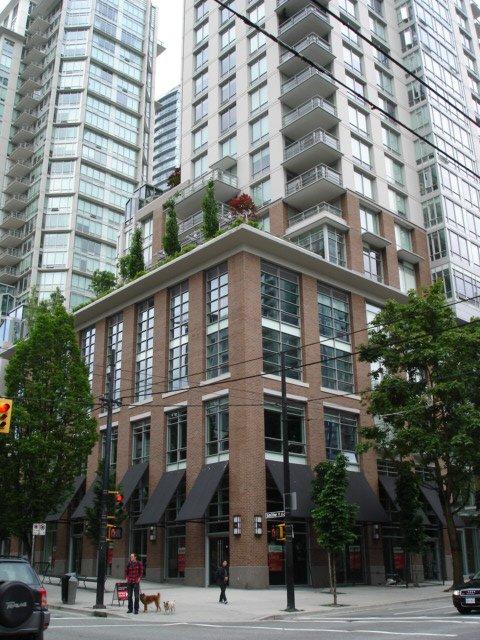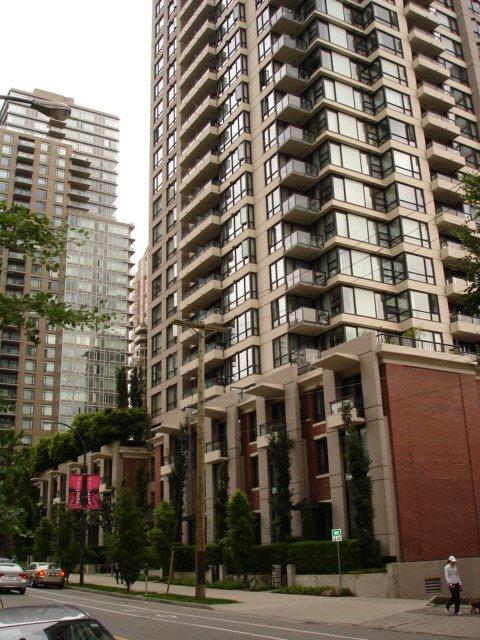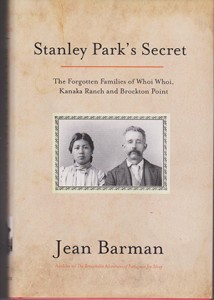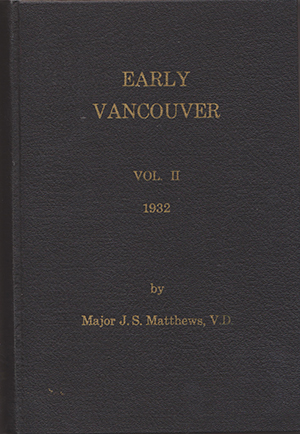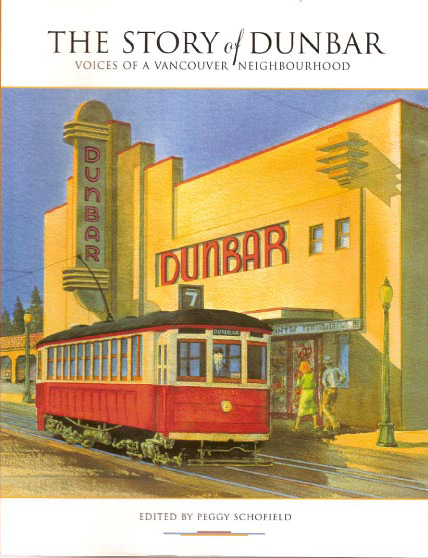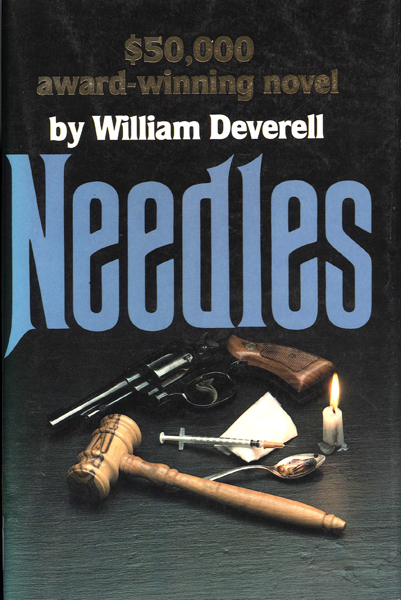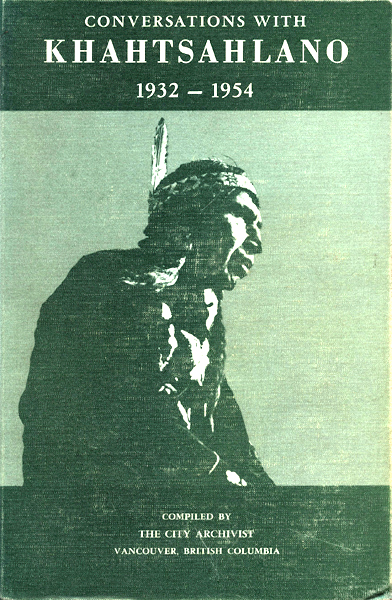Architecture and downtown urban design
“At the time [1889] this building [Dunn-Miller Block, now Army and Navy Department Store]was erected, it was the largest and most pretentious in Vancouver…it was without basement, no central heating, nor elevator, although three stories, but was the largest brick building at the time.”
J. S. Matthews, Archivist, 1932 (Early Van.)“With the completion of the buildings which are now planned and under construction about the corners of Granville and Georgia Streets, the appearance of those streets will be that of a deep canyon, at least for a block in either direction.”
news item, August 19, 1912, (Van. Sun)“Vancouver was a great show town in the twenties, with a lot of theatres. According to a list…there were some forty five of them.”
Ivan Ackery, Orpheum manager, 1980, p. 78
![Four men perched on top of terra cotta buffalo on the second hotel Vancouver, 1912.
Image: City of Vancouver Archives. [CVA 647.1]](https://story.vancouver-historical-society.ca/wp-content/uploads/2014/11/CVA-647-1.jpg)
Vancouver has followed a winding path to an architectural language of its own. Had the Bartholomew Plan of 1929 to beautify and functionally improve the city not been sidelined by the Great Depression and WWII, the look of the downtown in particular may have been different and less diverse. In spite of individual standouts such as the 1929 art deco Marine Building and the 1950s modern BC Hydro Building, the Burrard Building,and the Vancouver Public Library at Robson and Burrard, an integrated downtown design was slow to develop. A unified architectural language in the downtown core began to develop in the late 1980s.
![Pantages Theatre (Majestic) on Hastings, 1937.
Image: City of Vancouver Archives. [1965 CVA 1135-1]](https://story.vancouver-historical-society.ca/wp-content/uploads/2014/11/CVA-1135-1.jpg)
Neon signs as unity amongst perceived disorder
“We hope to make Vancouver known as a city of gorgeous lights and good music set in surroundings of unparalleled grandeur.”
Mayor Gerry McGeer, as in Williams, p. 206-07“…ugliness and disorder are often overlooked due to familiarity…”
Gerald Sutton-Brown, p. 23
![View of the the 800 and 900 blocks of Granville Street (Theatre Row) at night.
Image: City of Vancouver Archives. [CVA 672.1]](https://story.vancouver-historical-society.ca/wp-content/uploads/2014/11/CVA-672-1.jpg)
What did emerge from the 1920s amongst the different architectural styles on some high traffic areas was a downtown urban cityscape awash in neon light[1]. The various architectural styles that made up the Granville and Chinatown streets were embellished with a unifying brilliance of neon that not only bathed the rain-slicked streets in a kaleidoscope of colours, an antidote to the gray skies of Vancouver, but also brought people flooding into the areas. However, in the late 1950s,influenced by the thinking of cities elsewhere, the City’s Technical Planning Board concluded that the neon lights represented “ugliness and disorder.”[2] As well, the idea of architectural “unity and coherence” was pursued in the late 1960s and early 1970s, for example, with the construction in the downtown core of buildings and an underground shopping mall designed for a colder-weather city elsewhere in Canada and inappropriately parachuted into Vancouver. At the same time, city by-laws that severely restricted neon signs were put in place. Ironically, when the lights went out, so did people’s interest in coming to Granville Street or Chinatown and the areas showed neglect and decay. Yet, the core survived the utter decay seen elsewhere.
Emergence of “Vancouverism”
“This 119 room luxury hotel located in vibrant downtown Vancouver, B.C., occupies the first 15 floors of a 61 storey… building…”
Shangri-La Hotel, Vancouver, website
During this time of trying to define the city’s architectural language, a naissant, growing counterforce of ideas supporting density, public transport, mixed-use developments and abundant public spaces had been emerging from Vancouver born architects such as Arthur Erickson and Bing Thom, and from city planners such as Ray Spaxman and Larry Beasley. Their ideas were given weight by Jane Jacob’s extensive writings on how cities should function within their respective North American environments.[3]
An urban planning/architectural concept unique to Vancouver, dubbed “Vancouverism”, was born in the late 1970s. In brief, Vancouverism emerged as an idea for accessible public space and building designs that incorporated mixed-use developments, typically with a medium-height, commercial and/or residential base topped by skinny high-rise residential towers, a design that aimed to accommodate view corridors, particularly of the mountains.
Residential architecture
“A common public misconception is that all of our [residential] buildings were designed by local architects. In fact, many of our most delightful [Victorian] heritage structures owe their designs and layout to pattern books.”
Stuart Stark, 2003, in Building the West, p. 56“After we were married in 1897 I looked for a place for a home. It looked at a fifty foot lot on False Creek…They wanted $400.00 for it, $400….There was an enormous stump in the middle of the lane between 4th and 5th Avenues, between Columbia and Manitoba streets, it must have been five feet through.”
Capt. Percy Nye, 1931(Early Van.)“A photograph taken … in August 1908 from the [Kitsilano] shore just west of the foot of Yew Street, shows a flourishing tent town of thirty or forty tents…spread along the beach…”
Archivist J. S. Matthews, 1931 (Early Van.)“The first residence north of Cornwall Street, behind the beach, was one of five houses built by the C.P.R. to lead others to build in that section when it was first thrown open for settlement, and which area was, at the time, a dirty black panorama of burned stumps.”
Archivist, J. S. Matthews, 1931 (Early Van.)“[Shaughnessey], a place of beautiful and dignified dwellings characteristic of the best modern English and American home design.”
Captivating Vancouver, 1924, p. 51
![McCleery house, showing people in front yard, 188-?
Image: City of Vancouver Archives. [CVA 677-347]](https://story.vancouver-historical-society.ca/wp-content/uploads/2014/11/CVA-677-347.jpg)
Residential architecture outside the downtown peninsula reflected the arrival of various peoples. The British brought influences such as the English Cotswold/Fairytale Cottage, Tudor Revival, Victorian, Edwardian and British Arts and Crafts. The ever-influential Americans brought with them styles ranging from Spanish Colonial Revival to California moderne stucco box and California bungalow, which took root in Kitsilano.
![House in Grandview-Cedar Cottage area, 190_?
Image: City of Vancouver Archives. [SGN 952]](https://story.vancouver-historical-society.ca/wp-content/uploads/2014/11/SGN-952.jpg)
For a brief period starting in the 1950s the arrival of the international style of architecture in the form of west coast modern of glass and wood served to bring the lush rainforest growth visually inward. Recently the “postmodern” copying of the earlier styles and the resurrection of more traditional colours has been part of a conscious return to the confident, even brassy, past.
![A block of Vancouver Specials
Image: Flickr [jmv]](https://story.vancouver-historical-society.ca/wp-content/uploads/2014/11/Vancouver_Specials.jpg)
Unique to Vancouver residential housing was the 1960s-1980s utilitarian design deemed the “Vancouver Special” that was an attempt to answer family needs for affordable housing with cheap housing by maximizing lot space. The box-like structure, fiercely defended by their owners but a bane to residential architects, aesthetes and art critics, featured living space on the first and second floor, all of which rested on a cement slab.
While residential architectural styles throughout Vancouver generally proclaimed individuality of the owners, paradoxically and with a nod to the collective, most houses were, and to some extent still are, set back from the road leaving fenceless wide open lawns as a deliberate statement of community and openness.
![The front of Hycroft Mansion on 1489 MacRae Avenue.
Image: City of Vancouver Archives. [Bu P689]](https://story.vancouver-historical-society.ca/wp-content/uploads/2014/11/Bu-P689.jpg)

Image: City of Vancouver Archives. [Bu P689]
Gardens: restructuring nature
“…amateur gardeners of Vancouver are being much troubled by thieves who steal their choicest flowers and shrubs…”
B.C. Commonwealth, May 4, 1890“For God’s sake, hands off Stanley Park.”
news item heading, December 17, 1912 (Van. Sun)“How to handle these roses. Prune back to about 6 inches from the graft and plant firmly and deeply. If this is done you can enjoy an abundance of blossoms this year.”
Spencer’s Seed Store, May 4, 1938 (Van. Sun)
![Mr. & Mrs. Tyler, front garden, 1910.
Image: City of Vancouver Archives. [CVA 677-911]](https://story.vancouver-historical-society.ca/wp-content/uploads/2014/11/CVA-677-911.jpg)
While Vancouver has sought to define its own architecture, there is no question that from the beginning it has had a love affair with its parks and gardens. Vancouverites have long basked in a manicured version of nature while viewing real nature from a safe distance.
![Rock Garden, Stanley Park, 193_?.
Image: City of Vancouver Archives. [CVA 371-2849]](https://story.vancouver-historical-society.ca/wp-content/uploads/2014/11/CVA-371-2849.jpg)
Originally held back as a military reserve and later promoted by the CPR to become a park, Stanley Park[4] is the best known of Vancouver’s nature parks. While some effort took place to retain its original, meandering, aboriginal trails that had become skid roads, other parts were manicured to satisfy recreational and social popularity needs. To create a comfortable social distance from real nature, city officials removed First Nations people from two remaining settlements. Three-meter deep, millennia-old shell middens were dug out for be used as roadway covering.[5] As well, the City dammed the tidal estuary creating a fresh water lagoon.[6] Further, rock gardens were built and trees, roses and other plants were imported, as were non-native squirrels to give the place a familiar English park look.
![Gardens, Stanley Park, Oct. 1970.
Image: City of Vancouver Archives. [1970 CVA 1502-999]](https://story.vancouver-historical-society.ca/wp-content/uploads/2014/11/CVA-1502-999.jpg)
Other parks also took shape, including Queen Elizabeth Park in the 1940s and the Van Dusen Gardens in 1975. More recently, in 1985-86 and reflecting a changing population, the Sun Yat-Sen classical Chinese Garden, emulating a Ming Dynasty private classical garden, was built with Chinese artisans on former industrial land in Chinatown. Large donations along with granite quarried in China have helped to restore Stanley Park back to its natural state after a violent winter windstorm in 2006.
Fish-bearing streams throughout Vancouver, considered a bit too natural and an obstruction to development, were filled in over the past 100 years. This is consistent with the carefully manicured private gardens that have replaced native flora with imported exotic plants. Imported flowering trees line the streets and northern fan palms (tracicarpus fortunei) now line parts of English Bay.
Recent attempts to bring nature back to Vancouver have resulted in efforts to restore salmon-bearing creeks. As well, there have been large volunteer efforts to pull aggressive invasive species of plants from local parks. Chickens and beehives have returned to some backyards. On the other hand, some home owners have appropriated city sidewalk boulevards for planting wild and showy plants.
Art and Entertainment
On Thursday October 31, 1889 at the Central School Concert at the Imperial Opera House, Jean McLaren [will perform her] solo, ‘Polly, the cows are in the corn’ [and] Miss Campbell and Hector Stewart [will perform the] Instrumental, ‘When the leaves begin to fall.’”
(Progam, CVA Add Mss 120)“The question is being asked seriously whether Vancouver will have an [CPR] opera house next season in which high-class productions can be adequately staged.”
editorial, June 20, 1912 (Van. Sun)“Then there is Lee Tung Foo, the only and original Chinese entertainer, who, although he is a native born Chinese, at times speaks with both a Scotch and Irish accent, much to the enjoyment of those nationalities.”
Orpheum report, August 6, 1912 (Van. Sun)“…the Empress [theatre in the 1920s]…Former stagehands still recall the winter’s night when the furnace was stoked to a flowing roar. The pipes led directly under the stage and when Romeo and Juliet trod the boards in stocking feet their performance could only be compared to a pair of Mexican jumping beans.”
Ivan Ackery, 1980, p. 80[at Chinese Opera House on Columbia in the 1940s] “Chinese operas are notoriously long; they last four to six hours. Most of the time when Father and I arrived, we would find his friends and they would chat while the opera carried on. The women brought knitting with them and gossiped amongst themselves.”
Larry Wong, 2011, p. 24
![Audience attending Henry W. Savage’s production “King Dodo” with Richard Golden, Vancouver Opera House, 759 Granville St., Oct. 30, 1903.
Image: City of Vancouver Archives. [Bu P389]](https://story.vancouver-historical-society.ca/wp-content/uploads/2014/11/Bu-P389.jpg)
Early Vancouver’s preoccupation with cultural ties to the British Empire and developments elsewhere inhibited the development of an indigenous arts scene.[7] From the 1950s, the Vancouver School of Art (now Emily Carr University of Art and Design) and the Vancouver Art Gallery moved Vancouver into abstract art as a dominant form, leaving a disconnect with many Vancouverites seeking art with which they could emotionally identify. Consequently, much Vancouver-inspired art since then has been somewhat abstract, even encompassing performance art. In the last two or three decades, the transformational style of First Nations’ artists working out of Vancouver has gained currency and recognition.
![Five members of Empress Jazz Orchestra, Empress Theatre, Nov. 1, 1919.
Image: City of Vancouver Archives. [CVA 19-81]](https://story.vancouver-historical-society.ca/wp-content/uploads/2014/11/CVA-19-81.jpg)
Early Vancouver’s entertainment was influenced by the North American Orpheum circuit, often at the expense of locally grown talent.[8] The assortment of grand opera houses, cinema houses, and grand performance buildings were copies or derivatives of designs proven popular in the USA. Being a natural fit, the advent of film from the USA became a huge magnet for Vancouverites seeking a diversion from everyday life. In fact, over the decades many Vancouverites have been drawn southward to join the entertainment industry of sunny California.[9] Institutions such as the Vancouver Symphony Orchestra, founded in 1920, and the Vancouver Opera, founded in 1960, have helped further anchor talent to the city.
![Capital Theatre Premier for movie Silent Barriers, 1937.
Image: City of Vancouver Archives. [Can P106]](https://story.vancouver-historical-society.ca/wp-content/uploads/2014/11/Can-P106.jpg)
Vancouver’s indigenous entertainment industry emerged more recently. For example, in the 1950s CBC Radio aired a Vancouver-based mystery-serial about violence along Vancouver’s waterfront.[10] In the 1960s, George Ryga contributed a play called The Ecstasy of Rita Joe that featured an unnamed city modeled on Vancouver.[11] Since then many vibrant theatre companies, reflecting the new population mix, have launched plays set in the city and elsewhere. While several hundred films have been shot in Vancouver, the city has, until recently, doubled for cities elsewhere; only recently have films used the city as itself. Further, since 2004, the Chinese television producers have shot more than one soap opera using Vancouver’s large Asian population and the city’s environment.[12]
![Northwest Coast Art at Vancouver Airport.
Image: Flickr. [Noah Sussman]](https://story.vancouver-historical-society.ca/wp-content/uploads/2014/11/NWCoast_Art.jpg)
Sports in Vancouver
“It is just possible that some of the local Y.M.C.A swimmers will catch a place on the Canadian Olympic team when the British Columbia trials are held in May.”
news item, March 6, 1912, (Van. Sun)Yachting by Vancouverites was in full swing yesterday and practically every sailing and power craft in commission, composing two-thirds of the big fleet in the local port, was out during Saturday and Sunday.”
news item, May 6, 1912 (Van. Sun)“We have not the slightest hostility to professional sport, very much the reverse, indeed; but we maintain that no part of Stanley Park should be devoted to professional purposes.”
editorial, June 5, 1912 (Van. Sun)“With Vancouver having all the better of the play, the enthusiasm of the crowd knew no bounds and six thousand fans shouted themselves hoarse as the coast champs scored each successive goal towards a world’s championship.”
Vancouver Millionaires win the Stanley Cup, March 26, 1915 (Van. Sun, Mar. 27)
![Bicycle racers and others at Brockton Point 189_?.
Image: City of Vancouver Archives. [Sp P15.1]](https://story.vancouver-historical-society.ca/wp-content/uploads/2014/11/Sp-P15.jpg)
Because of its year-round mild climate, amateur and professional sports have always been part of Vancouver. From horse racing[13] to cricket[14] to baseball, hockey, soccer or football, Vancouverites have participated with gusto. Amateur and professional baseball were here from the beginning when in the 1880s a playing field was roughed out on the Cambie Street Recreation grounds and went through various leagues, names and built structures.[15] Given that Vancouver rarely has skateable winter ice, hockey did not gain any resonance until 1911 when the Patrick Brothers built the Denman Arena[16], replete with artificial ice, in the West End. It became home to the Vancouver Millionaires hockey team that, in 1915, won Vancouver’s only Stanley Cup[17].
![Flyers vs Canucks in Vancouver
Image: Flickr [Cindy Andrie]](https://story.vancouver-historical-society.ca/wp-content/uploads/2014/11/Flyers_vs_Canucks.jpg)
![BC Place lit up orange after the BC Lions’ Grey Cup celebration party on Wednesday, November 30, 2011.
Image: Flickr [Shane Kaye]](https://story.vancouver-historical-society.ca/wp-content/uploads/2014/11/BCPlace.jpg)
![The BC Lions vs. the Montreal Allouettes
Image:Flickr [quinet]](https://story.vancouver-historical-society.ca/wp-content/uploads/2014/11/BCLions.jpg)
![The Vancouver Whitecaps vs. the Portland Timbers
Image:Flickr [quinet]](https://story.vancouver-historical-society.ca/wp-content/uploads/2014/11/Whitecaps.jpg)
The Mounties and the Vancouver Canadians baseball team played at the Nat Bailey Stadium and soccer’s Whitecaps and the CFL’s BC Lions played at Empire Stadium and later at BC Place Stadium.
![Vancouver Lawn Tennis Club, Finals international, Aug. 1907.
Image: City of Vancouver Archives. [CVA 677-242]](https://story.vancouver-historical-society.ca/wp-content/uploads/2014/11/CVA-677-242.jpg)
Amateur sports abound. Social delineators like the Royal Vancouver Yacht Club and the Vancouver Lawn and Tennis Club are just one end of the spectrum of citizens partaking in sailing, tennis, soccer, golf, swimming, football, tennis, basketball, skiing, jogging, bicycling, rock climbing, or just plain walking to work. Vancouver as venue for the 1954 British Empire Games and 2010 Winter Olympics allowed all to participate as volunteers or cheering benchwarmers.
![Sailboats on English Bay, c. 1911.
Image: City of Vancouver Archives [CVA 371-625]](https://story.vancouver-historical-society.ca/wp-content/uploads/2014/11/CVA-371-625.jpg)
Vancouver’s forward leap:
four decades of rapid change from the 1970s
“For many affluent, market-oriented, and globalized cosmopolitans, Expo was the springboard from which we left the sleepy gravity of moribund, resource-extraction provincialism and threw our once-sinewy, lumberjack arms open to sushi and foreign investment. For critical nostalgics on both the right and left, 1986 is when the city all went to hell.
Humourist and social critic, Charles Demers, p. 17“How can Vancouver call itself a real city when it doesn’t have a freeway?”
Unidentified California tourist outside Sylvia Hotel, July 1992The whole idea is, can we create an urban living experience that is better than people’s idea of the suburbs? That is more fun. More safe. More efficient.”
City Planner, Larry Beasley, 2006
![Maple Tree Square January 1974
[Construction, Sept. 1, 1972]
Image: City of Vancouver Archives.
[CVA 780-639]](https://story.vancouver-historical-society.ca/wp-content/uploads/2014/11/CVA-780-639.jpg)
How did Vancouver go from a provincial, grimy backwater with narrow definitions of exclusivity and inclusion into a welcoming city with a global recognition?[18] The post-WWII wrapping up of the British Empire was symptomatic of a larger change to which Vancouver was to become a part. For those in the city, the subsequent mixed European immigration of the next two decades helped Vancouverites to re-evaluate tightly held norms and soften exclusive attitudes. Coincidently in the 1960s when further immigration rules eased, the new reality was seen as more an interesting curiosity than an impediment to maturity. The actual leap-frogging into modernity took place from the 1970s and was a combination of inward momentum and outside influences. At that time, Vancouver had just gone through a decade of social changes with the advent of hippies, widespread use of marijuana, and thousands of US draft resisters pouring into the city. By the early 1970s, popular movements such as Greenpeace had emerged out of a combination American and Vancouver influences.[19] Other citizen movements saw developers as more self-serving than contributors to a vibrant city; consequently, freeways and other North American models were popularly rejected. Conceived in 1978, what was originally planned as a small transportation fair to celebrate Vancouver’s first 100 years blossomed into a full-blown international exposition. The result, Expo 86, was made up of dozens of country and corporate pavilions, used 8000 volunteers, had 22 million visitors, and saw elevated standards of service everywhere. One concrete lasting legacy was a computer-driven magnetic-levitation transportation system called Skytrain. Another is Science World at the eastern end of False Creek.
![Expo 86.
Image: Flickr [Sandra Cohen-Rose and Colin Rose]](https://story.vancouver-historical-society.ca/wp-content/uploads/2014/11/Expo86.jpg)
Expo 86 did not end there. As the exposition itself covered old industrial lands, it was symbolic of the transition from Vancouver as an industrial and resource-based economy to a post-industrial city. As the return to China of Hong Kong and Macao was a growing concern, Chinese investors looked elsewhere for security of families and investment. Consequently, Li Ka-shing of Concord Pacific purchased a third of the Expo site for development. Old British ties to Hong Kong no doubt played a role in making Vancouver an attractive site for investment. Considerable Chinese private capital and many immigrant families followed. As a consequence, today a growing proportion of the population has transnational and increasingly trans-Pacific identities, creating new narratives at the expense of the older Vancouver one.
![Tall skinny towers….
Image: Flickr [jmv]](https://story.vancouver-historical-society.ca/wp-content/uploads/2014/11/towers.jpg)
In the 1990s as Vancouverism took hold, the downtown was transformed as tall skinny towers, often residential, replaced former corporate head offices. The 2010 Winter Olympics[20] was another game changer. Not without its detractors or opponents at the outset, the spirit of the citizens of Vancouver turned the Olympics into an outstanding success as the self-policing citizens took over the streets and 85 year old grandmothers could be seen high firing leather-clad bikers. Tens of thousands daily filled the downtown in a grand celebration as befitting a now-confident city.
![Olympic Cauldron – Vancouver 2010 Winter Olympics.
Image: Flickr [8th Day]](https://story.vancouver-historical-society.ca/wp-content/uploads/2014/11/cauldron.jpg)
Vancouver in print:
a glimpse into the city’s soul through its written form
Vancouverites have long probed the city’s soul through a wide range of writing.[21]
It took half a century of maturing as a city before UBC historian Walter N. Sage published “Vancouver: The Rise of a City” in the far-off Dalhousie Review,[22] a study that had been financed in 1932-33 by the Canadian Club of Vancouver.
Sage wrote at a time when the inveterate, perennially cash-starved but visionary City Archivist Major James Skitt Matthews was beginning to “publish” in typewritten form his multi-volume Early Vancouver series collection of interviews and documents[23]. More recent serious studies are represented by Robert A. J. McDonald’s analysis of the early city in terms of class, status and social boundaries in Making Vancouver and Jean Barman’s important study of colonization and the marginalization of Native peoples in Vancouver in Stanley Park’s Secret. Popular histories by Allan Morley and Eric Nichol and overviews by Patricia Roy, Norbert MacDonald and John Belshaw and Diane Purvey have put the city under the microscope. Similarly, Michael Kluckner’s illustrated 2006 and 2011 Vancouver Remembers focuses on 40 years of the city’s history up to Expo 86.
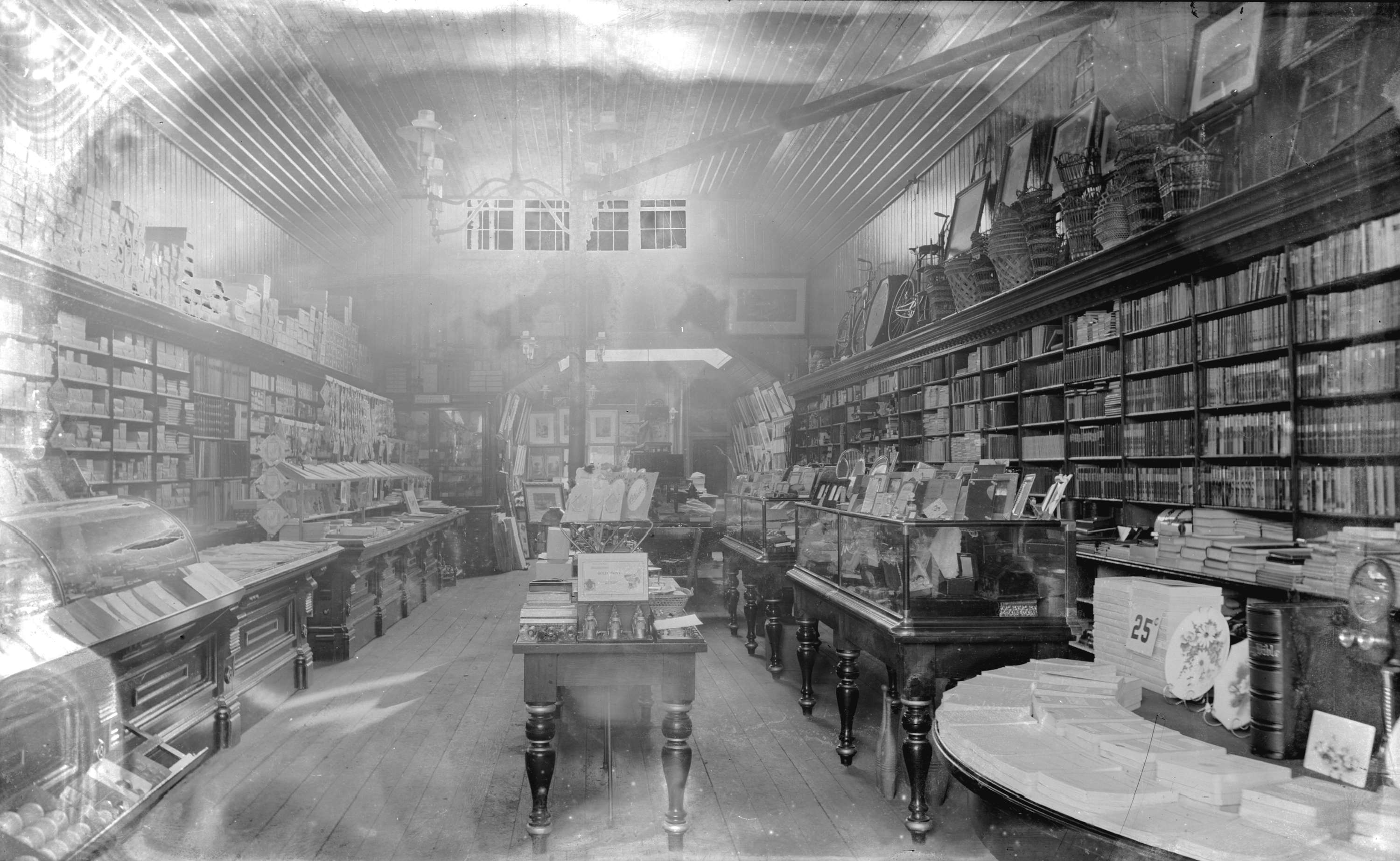
Image: City of Vancouver Archives. [SGN4]
Vancouver’s physical environment is revealed in Bruce MacDonald’s 1992 Vancouver: A Visual History, J. J. Clague’s 2003 Vancouver, city on the edge: living with a dynamic geological landscape… and Derek Hayes 2005 Historical Atlas of Vancouver and the Lower Fraser Valley. Sharon Proctor’s 1976 Vancouver’s Old Streams is a more recent attempt to reclaim some of Vancouver’s original landscape.
An examination of maturing neighbourhoods is a more recent phenomenon. Chuck Davis’ 1976 The Vancouver Book and Lisa Smedman’s 2008 Vancouver stories of a city: A history of Vancouver’s neighbourhoods and the people who built them are more all-encompassing whereas John Atkin‘s 1994 Strathcona: Exploring Vancouver’s First Neighbourhood and Peggy Schofield’s 2008 The Story of Dunbar are neighbourhood specific. Non-British Europeans distinguished themselves as communities within the city. Such examples are Irene Howard’s 1970 Vancouver’s Svenskar: A History of the Swedish Community in Vancouver and Raymond J. Culus’ 1998 Vancouver’s Society of Italians.
A further effort to probe into the soul of the city is found in Colin Browne’s anthology Vancouver’s Literary Landscape: with poet and filmaker Colin Browne (1984), Alan Twigg’s Vancouver and Its Writers (1986) and Gary Geddes’ Vancouver: Soul of a City (1986).
A touch of the city’s funny-bone can be found in caricatures of businessmen by H. S. Palmer in his Our men of affairs (1912), through the humour of Eric Nicol, and starting in 1952 to the twenty-seven annual books of the best of Norris cartoons. Charles Demers’ 2009 Vancouver Special wryly coaxed humour out of his personal reflections.
More recently, Chuck Davis’ 2011 The Chuck Davis History of Metropolitan Vancouver is the author’s love affair with all the wickedly wonderful things that have happened in Vancouver from before its inception to the present.
The labour movement showed a more reflective, even serious, side in its literature. In 1962 the Labour Poets Workshop published Poems for Life.

Retrospective was the point of view of Ronald Liversedge’s 1966 Recollection of the On-To-Ottawa Trek, 1935. The 1985 Working Lives Collective Working Lives: Vancouver 1886-1986 and the International Longshoremen’s and Warehousemen’s Union 1975 effort of Man Along the Shore: The Story of the Vancouver Waterfront, as told by Longshoremen themselves, 1860s-1975 were two that helped flesh out the lives of working men and women. Another along the same lines was Rolf Knight’s 1980 Along the No. 20 Line: Reminiscences of the Vancouver Waterfront.
![Clark & Stuart Books & Stationery, 1898.
Image: City of Vancouver Archives. [Bu N283]](https://story.vancouver-historical-society.ca/wp-content/uploads/2014/11/Bu_N283.jpg)
The early novels about Vancouver were stories set within a wild landscape of mountains, oceans and river. Morley Roberts’ 1892 The Mate of the Vancouver uses Vancouver a background for romantic adventure as does Harold Bindloss’ 1906 Alton of Somasco: a romance of the great northwest and his 1908 A damaged reputation. The wilds of the area figure largely in Bertrand Sinclair’s 1916 Big Timber: a story of the Northwest and Stewart Edward White’s 1925 Skookum Chuck, George Godwin’s 1929 The Eternal Forest and Roderick L. Haig-Brown’s 1942 Timber. Magnus Pike’s 1930 Go west, young man, go west takes a different tack with a young man from the east, trying various jobs and getting swindled. This contrasted in subject with Lily Alice Lefevre’s 1895 The Lions’ Gate: and other verses, and Rae Verrill’s 1926 Poems of Vancouver or Phyllis Webb’s 1962 collection of poems The Sea is also a Garden. Earle Birney put Vancouver on trial in 1952 with his Trial of a City and Other Verse.
![Carnegie Library, Main & Hastings, c. 1903.
Image: City of Vancouver Archives. [Bu P116.1]](https://story.vancouver-historical-society.ca/wp-content/uploads/2014/11/Bu_P116.jpg)
By the 1960s, the topic had widened as in Margaret Walker’s 1962 Come Down from Yonder Mountain: A Novel about a wealthy Calgary Widow in Vancouver and Ethel Wilson’s 1961 Mrs Golightly and other stories attest. George Bowering’s 1967 Mirror on the Floor, which portrayed a graduate student and his girlfriend, Malcolm Lowry’s 1971 October Ferry to Gabriola, Helen Potrebenko’s 1975 Taxi!, a novel about society’s social and political problems, and William Deverell’s 1979 Needles, about corruption and drug trafficking, demonstrate the range of output. Jane Rule’s 1977 iconic lesbian novel, The Young in One Another’s Arms, is representative of the extensive gay literature in the area. Carole Gerson 1984 Vancouver Short Stories once again focussed on different aspects of Vancouver whereas Peter Trower’s 1996 Dead Man’s Ticket: a novel of the streets and the woods reached back into to the days of logging. Jim Christie’s 1997 Shanghai Alley and Lee Henderson’s 2008 The Man Game also probed historical context for subject matter. On the other hand, Timothy L. Taylor’s 2001 Stanley Park captures the texture of Vancouver through contemporary sounds, smells and restaurant cooking.
James Skitt Matthews’ 1955 Conversations with Khahtsahlano 1932-1954 along with his Early Vancouver volumes kept local First Nations presence alive, as did August Jack Khahtsahlano’s 1966 Squamish Legends. While First Nations legends in their own voice were not generally embraced, paradoxically one of the most popular Vancouver literary figures, herself part Iroquois, was one of the earliest, E. Pauline Johnson, whose presence from 1904 perhaps evoked a First Nations Vancouver ideal that never was. Possessing the “right” elements, idealized and distant Mohawk and English blood coupled with a stage presence, her 1911 Coastal First Nations stories Legends of Vancouver and her Flint and Feather poems of 1912 struck a chord and drew rave reviews. Vancouverites turned out massively for her funeral in 1913 and erected a monument to her in Stanley Park, something not given to any other literary figure in Vancouver. Until the last few decades local First Nations literary output continued to be mute, other than non-native B. A. McKelvie’s 1941 Legends of Stanley Park. More recently, a number of First Nations publications have found their way onto reading shelves.

Numerous books have been published on Vancouver’s art and artistic scene. Jack Shadbolt’s 1968 work, In Search of Form is somewhat iconic in that it represents Vancouver’s flirtation with abstract art. It is book-ended by Sheryl Salloum’s 2011 reflective look at the more traditional with The Life and Art of Mildred Valley Thornton. Doug McCallum’s 1984 Vancouver Orpheum: the life of a theatre and Dal Richards’ 2009 One More Time! The Dal Richards Story reflect on almost a century of entertainment.
Architecture found resonance as early as 1900 when a group of local architects published Vancouver of today architecturally and Edward Mills gave the same retrospective look in 1975 with Vancouver Architecture 1886-1914. Donald Luxton’s 2003 Building the West, Early Architects of British Columbia placed Vancouver in the larger picture while Douglas Coupland’s 2000 A City of Glass and Lance Berelowitz’s 2005 Dream City, Vancouver and the Global Imagination sought to identify Vancouver’s uniqueness. Patricia E. Roy’s 1980 Vancouver: an Illustrated History and Michael Kluckner’s 1990 and 2012 Vanishing Vancouver were somewhat nostalgic about the disappearing aspects of the city.
Vancouver has always been multicultural, although recognition was not always apparent. Kevin Griffin’s 1993 Vancouver’s many faces: passport to the cultures of a city attests to a recognition of that fact.
From their first arrival in the late nineteenth century travelling from their already modernizing state, the Japanese collective identity and social cohesion was strong. Consequently, early Japanese writing showed connections to a broader landscape. In 1940 the Canadian Japanese Association was able to state its place in Canada confidently with The Japanese Contribution to Canada: A Summary of the Role played by the Japanese in the Development of Canadian Commonwealth. Having been removed during the war and denied the right to return to the coast until 1949, the Canadians of Japanese heritage sought to reclaim their voice within the Canadian context.
In 1954 Tsutae Sato wrote in the Japanese language the History of the Japanese Language School. Four years later, Ken Adachi used the History Committee of the Japanese Canadian Citizens Association to publish his A History of the Japanese Canadians in British Columbia 1877-1958. By 1992, there was still a sense of loss with Tamio Wakayama’s Coming Home to Powell Street. Breaking from the personal narrative were Shizuye Takashima’s A Child in Prison (1971) and Joy Kogawa’s widely acclaimed Obasan (1981). In 2015, Michael Kluckner addressed the subject in cartoon form in Toshiko.
The Chinese on the other hand arrived early, and already by 1900 a number of second and even third generation of Canadians of Chinese heritage were living in Vancouver. In spite of exclusion and lack of enfranchisement, those who told us about early experiences include Sing Lim, who wrote his reminiscent West Coast Chinese Boy in 1979, and Raymond Chow, whose love of older Vancouver emerged in 1984 as Vancouver as it was.

Identity and accommodation were to be found in Linda Tse’s 1988 Families in East Vancouver: Our Multicultural Neighbourhood, Paul Yee’s 1988 Saltwater City: An Illustrated History of the Chinese in Vancouver, Evelyn Lau’s 1989 Runaway: Diary of a Street Kid, and Larry Wong’s 2011 memoir Dim Sum Stories: A Chinatown Childhood. A further coming to terms with the past can be found in Denise Chong’s 1994 The Concubine’s Children: portrait of a family divided, and Wayson Choy’s 1999 Paper Shadows: a Chinatown childhood.
The tensions of locally born and immigrant Chinese were to be found in Wing Chung Ng’s 1999 The Chinese in Vancouver, 1945-80: The pursuit of identity and power. The imagination took flight with such books as Sky Lee’s Disappearing Moon Café, about four generations of a family (1990), and Wayson Choy’s award winning The Jade Peony: a novel (1995), about Vancouver in the 1930s and 1940s. People not of Chinese heritage also wrote about the Chinese experience. One such example is E. G. Perrault’s 2001 Tong: the story of Tong Louie, Vancouver’s quiet titan.
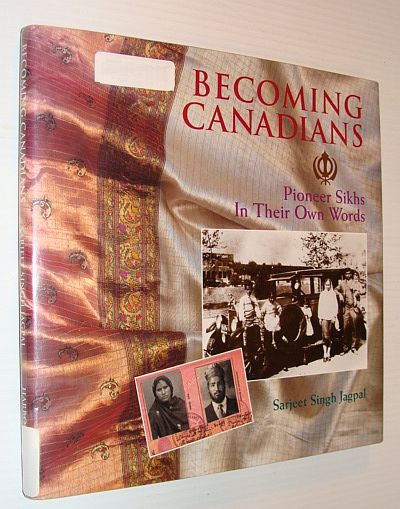
The body of Punjabi and South Asian literature set in Vancouver includes visiting UBC professor Adrian C. Mayer’s 1959 A Report of the East Indian Community in Vancouver and Sarjeet Singh Jagpal’s 1994 Becoming Canadian: pioneer Sikhs in their own words. Given the widespread settlement of South Asians outside of Vancouver, the city become secondary in examples such as M. G. Vassanj’s 1985 Meeting of Streams: South Asian Canadian Literature, Diane McGifford’s 1992 The Geography of Voice: Canadian Literature of the South Asian Diaspora and Archana B. Verma’s 2002 The Making of Little Punjab in Canada: Patterns of Immigration.
With paper books in decline world-wide, thoughts about people and their relationship to Vancouver can be found throughout the internet. Consequently, the Vancouver story continues allowing access to a greater number of voices.
Summary

Image: Flickr [Christopher Wenger]
Vancouver has gone through considerable transformation during its short life as a city. A damp coastal city that was given relevance by the marriage of a railway, ships and geography, Vancouver and its dominant British population pushed ahead with great vigor until 1912 when the economy and spirits slowed. While it regained its exuberance in the 1920s, and non-Europeans were further marginalized, the city searched for its own direction. With cultural and economic growth sidelined by the Great Depression and WWII, it was not until the 1960s that real change began to take place.
Large-scale redevelopment of downtown Vancouver, the rebuilding of the West End, and accelerated suburbanization began to change the look of the city. Conflict over development issues such as the construction of freeways also profoundly altered civic politics and government in the early 1970s.
At that time, Vancouverites began to see their city as unique and not subject to the dictates of outsiders. Buoyed by the success of Expo 86, the development of a hybrid Euro-Asian community, and more recently, the success of the 2010 Winter Olympics, the city now looks in three directions: east to its historic traditions of Europe, west to its historic and growing connections with Asia, and inward for its emerging Euro-Asian-indigenous hybrid reality. Vancouver is a work in progress.
– Bruce M. Watson
June 2012
“Dollar forty-nine day, Woodward’s. Dollar forty-nine day, Tuesday.”
(Familiar radio jingle that ran for decades in Vancouver.)
Acknowledgements
Source Material: City of Vancouver Archives, Vancouver Public Library
Photographs: City of Vancouver Archives, Vancouver Public Library, Special Collections, Kellan Higgins, Flickr photographers [8th Day; boring_vanner; Christopher Wenger; Cindy Andrie; jmv; Michael Scheltgen; Noah Sussman; Paul Krueger; quinet; Shane Kaye, Vaska 037
Editing: Robert A. J. McDonald, John Belshaw
Layout and Design: Ariba Dalal, Quasar Design & Data Management Inc.
For a purely chronological version of The Vancouver Story as seen through the eyes and mind of the late Chuck Davis, try the following website: www.vancouverhistory.ca and click on chronology on the menu bar.
- What set Vancouver apart from neon signage in other cities was that practically all the Vancouver signs were leased and always kept in good repair. The neon areas were deemed to be alive, vibrant and fresh.↵
- “Definition of beauty, in connection with the commercial areas of a City is difficult; ugliness and disorder are often overlooked due to familiarity. The unity and coherence of the building facades of Regent Street in London and the sense of spaciousness and luxury of the Champs Elysses in Paris give some guide to the elements which would improve downtown. Gerard W. Sutton-Brown’s report, Downtown Vancouver 1966-1976, 23.↵
- The Death and life of Great American Cities, New York: Random House, 1961, was the most influential.↵
- The reasons the CPR lobbied so hard were not altogether altruistic. Because the CPR, which originally had been refused part of the peninsula, did not want more developer-controlled land released into the land market, thus driving down its own prices, it engineered the lease of the peninsula to the city to become a park. Barman, Stanley Park Secrets, 85-91.↵
- The midden material was taken from Whoi Whoi (Xwáýxway).↵
- Lost Lagoon, so named by mixed descent Mohawk poet Pauline Johnson who had noted that water from the tidal estuary disappeared at low tide.↵
- Former Group of Seven eastern Canadian painters F.H. Varley and Lawren Harris left their mark while Mildred Valley Thornton struggled for recognition from her Comox Street studio.↵
- In spite of overwhelming influences from elsewhere, a number of popular troupes were formed in Vancouver, and held their own when touring the circuits. One such person was Charles Eliot Royal, at the Empress Theatre in Vancouver, a noted song writer, performer and actor. Royal had numerous companies such the Empress Players, Vancouver Favourite Players, etc. He managed the Pantages Theatre before purchasing it in 1917 and renaming it the Royal Theatre.↵
- Among the many residents, temporary or otherwise, who migrated south in the first half of the 20th Century to pursue film careers, and who changed their names to bolster their careers, were William Henry Pratt (Boris Karloff), Sadie Marks (Mary Livingston) and Peggy Middleton (Yvonne de Carlo).↵
- It was appropriately called Don Grey, Marine Investigator.↵
- One of the lead roles was played by Chief Dan George, chief of the Tsleil-waututh First Nation. His family name, according to family tradition, was taken in a name exchange with Captain George Vancouver in 1792.↵
- Wildly popular in mainland China were Farewell Vancouver and Vancouver Memories ↵
- Around the time of incorporation, horse racing took place on muddy Howe Street between Nelson and Georgia Street.↵
- From 1888 cricket was played at Stanley Park’s Brockton Oval.↵
- Recreation Park 1905-, at Smithe & Homer; Athletic Park, 5th& Hemlock, 1913-1951; Oppenheimer Park, 1914-1941; Capilano/Nat Bailey Stadium, 30th& Ontario, 1951-.↵
- One of the world’s largest indoor artificial-ice rinks at the time, it burned down in 1936.↵
- Since then, ice hockey has moved through various venues and name changes, the latest being the Vancouver Canucks who play at the Rogers Arena.↵
- The name Vancouver is now recognizable without having the province or country as further descriptors to denote its location.↵
- The socio-political conditions in Vancouver, the province and the country, reshaped the American phenomena (peace movement of the 1950s and 1960s, the New Left, the counterculture and ecology movements) to create its unique form of environment activism, Zelko, “Making Greenpeace,” p. 198.↵
- The 2010 Winter Olympics was spread out over Richmond, West Vancouver, University Endowment Lands and Whistler.↵
- Vancouver has had a long tradition with robust, socially and politically active newspapers from the 1880s but they are not dealt with here.↵
- Dalhousie Review, Vol. XVII, April 1937, 49-54.↵
- Matthew’s Early Vancouver, volume II is a 1959 reprint of his original typewritten volumes I and II plus five other volumes of collected ephemera.↵

